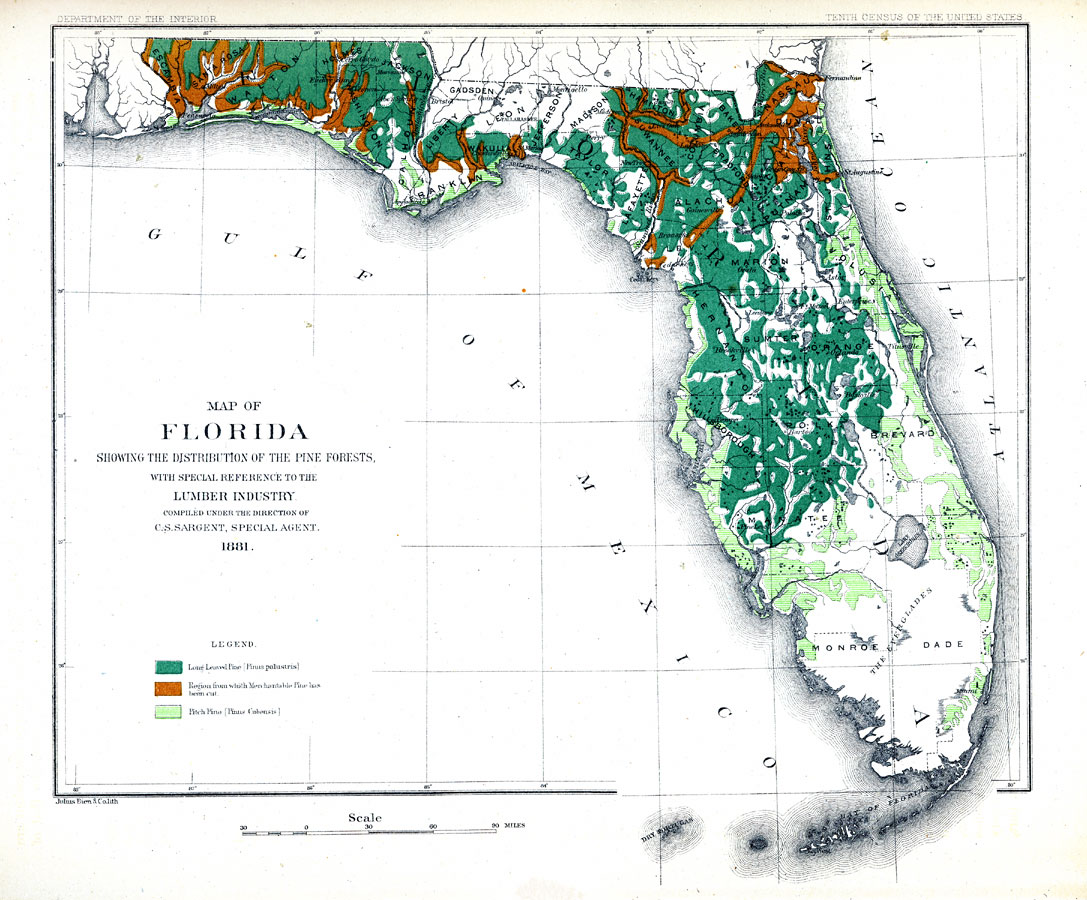Florida's Trees

Resource: Florida Tree Distribution Maps
ACTIVITY
Students will choose a Florida tree (native or not), it just needs to be a tree that grows in Florida. Students need to research the tree, first known existence in U.S., Florida, etc. Describe soil type, PH balances, rainfall needed, sun vs. shade, estimated oxygen output, etc. Then, the students will compile a web site (can be interactive) that describes the parts of the tree and gives the facts.
Standards this activity addresses:
- Grades 9-12 (1996 Standards)
- Strand F - Processes of Life
- 1. The student describes patterns of structure and function in living things. (SC.F.1.4) BM 2,7
- 2. The student understands the process and importance of genetic diversity. (SC.F.2.4) BM 3
- Strand G - How Living Things Interact With Their Environment
- 1. The student understands the competitive, interdependent, cyclic nature of living things in the environment. (SC.G.1.4) BM 1
- 2. The student understands the consequences of using limited natural resources. (SC.G.2.4) BM 2,4,5,6
- Strand H - The Nature of Science
- 1. The student uses the scientific processes and habits of mind to solve problems. (SC.H.1.4) BM 1,3, 7
- 3. The student understands that science, technology and society are interwoven and interdependent. (SC.H.3.4) BM 3, 6
- Grades 9-12 (2008 Standards)
- Body of Knowledge:
- Nature of Science
- Standard 1 - The Practice of Science SC.912.N.1.1 - N.1.7
- Standard 2 - The Characteristics of Scientific Knowledge SC.912.N.2.5
- Standard 3 - The Role of Theories, Laws, Hypotheses, and Models SC.912.N.3.1 - N.3.5
- Standard 4 - Science and Society SC.912.N.4.1, N.4.2
- Life Science
- Standard 14 - Organization and Development of Living Organisms SC.912.L.14.3, L.14.7
- Standard 17 - Interdependence SC.912.L.17.2, L.17.4, L.17.5, L.17.8, L.17.13, L.17.15
- Standard 18 - Matter and Energy Transformations SC.912.L.18.7, L.18.9